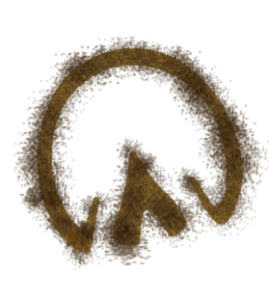Hay everyone,
I hope everyone is staying cool and hydrated despite this summer heat! My human friends are making sure I have access to shade and water, although sometimes I wish I could pull the hose out of the water trough while it is filling and spray myself down!
In my last post, I discussed exercising in hot weather. If you missed it, you can find the blog post here. This week, I want to talk about some of the serious illnesses associated with heat stress. Similar to humans, horses can also suffer heat exhaustion and heat stroke if they are heavily exercised in extreme heat and/or humid weather.
In the case of both illnesses, horses will be dehydrated, profusely sweating, and experience increased respiratory and heart rates. A quick way to tell if your horse is dehydrated is to do a skin pinch test! This is when you tent the skin on the neck with your pointer finger and thumb, and see how long it takes for the skin to retract to it’s normal surface. If the skin does not spring back in less than 4-6 seconds, your horse is showing some signs of dehydration.
One of my all time favorite things is taking a drink under the shade of a favorite tree or run-in shed.The key difference between heat exhaustion and stroke is that heat stroke will result in a significantly higher body temperature, circulatory collapse, delirium, and convulsions. It is important to note that if heat exhaustion is not treated correctly, it can develop into heat stroke! I created a table below for you to share with your friends as a shortcut to determine if your horse is suffering from heat stroke.
| Vital Sign | Normal Adult Horse | Adult Horse suffering from heat stroke (°F) |
|---|---|---|
| Rectal temperature | 99.5-101.5 (can reach 103 during exercise) | Over 105 |
| Heart rate (beats per minute) | 30-44 | More than 60 |
| Respiration rate (breaths per minute) | 8-12 | More than 40 |
Heat stress and stroke require immediate cooling. Just like on those extremely hot days when you want to jump in an ice-cold pool, your horse can be hosed with cold water. In fact, adding ice to water will increase the speed of cooling for horses with a rectal temperature of 105 degrees.
Now I know what you’re thinking; you’re nervous you might send your hot horse into shock, or decreased blood flow, if you use ice-cold water. Fret not! My friends at the The University of Ohio State studied how to reduce heat stress in horses competing in a 3-Day Event in preparation for the 1996 Olympic Games in Atlanta, and ice-water an effective cooling method without side effects.
If you have a horse prone to tying up, do not apply ice water directly to the hind end muscles. In this case, you would want to focus the water more near the neck, head, and barrel.
In addition to cooling, it is important to note that heat stroke is a medical emergency that requires immediate veterinarian attention. While you are waiting for your vet to arrive at the barn, make sure you remove the horse from direct sunlight, and start trying to cool its body temperature; this can be done by using ice water and fans, as I previously mentioned. Make sure your horse has cool, clean water and electrolytes available. (Electrolytes are small minerals important for cells in the body to function properly. Examples include sodium, potassium, magnesium, calcium chloride and phosphorus).
Once your veterinarian arrives, he/she will be able to administer intravenous fluids and electrolytes via a catheter to restore hydration and normalize blood chemistry.
Another illness associated with hot and humid temperatures is heat cramps. Signs of these cramps include spasms and muscle twitching of the abdomen and legs. This is a result of the extreme loss of electrolytes in sweat. Our muscles need all of the electrolytes in order to function properly, so when the source is depleted, it makes our muscles weak. Similar to treating heat exhaustion and stroke, the horse should be cooled and given electrolytes.
Although summer seems to be a favorite season among a lot of barn owners (because there is no chance of snow clean up), the accompanying heat can create problems for my four legged friends and me. The first step to ensuring your horse’s health in the heat is to be aware of the signs and symptoms of illness. As you are drinking your Gatorade in the shade, don’t forget to let us join you!
Until next time!
Your Pal,
Lord Nelson


